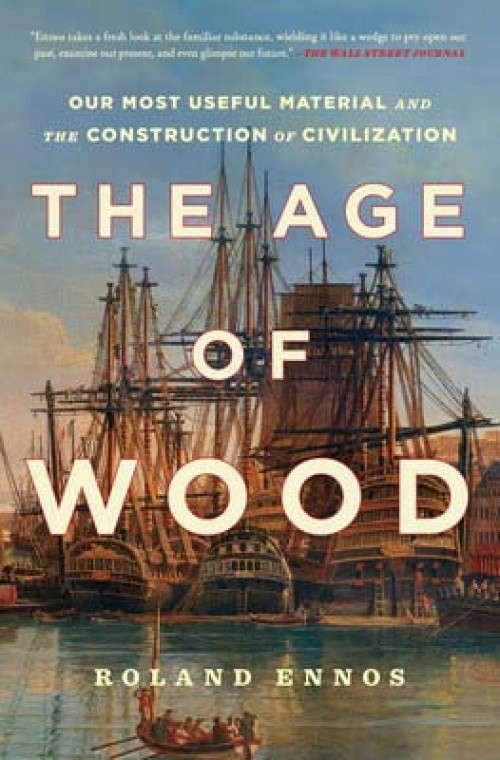by Roland Ennos
Scribner, 2021
Our Most Useful Material and the Construction of Civilization
The Stone Age, marked by our very distant ancestors’ use of stone tools, is commonly accepted as the beginning of human development. In The Age of Wood: Our Most Useful Material and the Construction of Civilization, Roland Ennos writes that it’s time to update that uninformed 19th-century idea: Most early tools, he argues, were probably made of wood, and we now know that humans have never been the only animals to use tools. Ennos, a professor of biological sciences and a prolific scientific writer, contends that wood has played a crucial and much larger role in the evolution of primates, in prehistory, and in human history than has been previously acknowledged.
“It is time to reassess the role of wood,” Ennos writes. A traditional approach to history outlines the rise and fall of nations and powerful leaders, and tracks changes in social, political, and economic structures. Ennos, however, takes a fascinating, refreshing, and provocative approach: He looks at the human story – both past and present – from a wood-centric perspective.
Drawing from both previous knowledge and recent research in a wide variety of fields, including anthropology, archeology, architecture, engineering, and carpentry, Ennos begins millions of years ago with primates building wooden nests in trees and making wooden tools, and moves chronologically to the present. At every stage, he shows ways in which wooden structures, wooden tools, and wood used as a fuel helped humans to progress. He argues that the most important thing about advances with other materials was often how those enabled humans to better use wood.
“The foundations of our relationship with wood lie in its remarkable properties,” he writes. “As an all-around structural material it is unmatched. It is lighter than water, yet weight for weight it is as stiff, strong, and tough as steel and can resist both being stretched and compressed. It is easy to shape, as it readily splits along the grain, and it is soft enough to carve, especially when green. It can be found in pieces large enough to hold up houses, yet can be cut up into tools as small as a toothpick. It can last for centuries if it is kept permanently dry or wet, yet it can also be burned to keep us warm, to cook our food, and to drive a wide range of industrial processes.”
In the modern world, Ennos notes that wood successfully competes with “metals, concrete, plastics, and composites.”
“Wood production and use is growing year by year, and from around 1.9 billion cubic yards in 2018 it is likely to rise to around 2.2 billion cubic yards by 2030. A greater volume of wood is now used even than that of its nearest rival, cement, whose production is currently estimated at 1.7 billion cubic yards per year. But our demand for wood and our use of trees continues to exert huge pressures on the growth of forests and trees around the world.”
In the last two chapters, Ennos writes about the many ways trees and forests are important to us (including our mental health) and about challenges we face in taking care of them. Although this section is interesting, the topic is too large to adequately cover in 30 pages. What is most valuable about this book is that Ennos effectively shows “how important our relationship with wood has been to our success as a species.” I have always loved trees and wood, and this book made me appreciate them even more.


